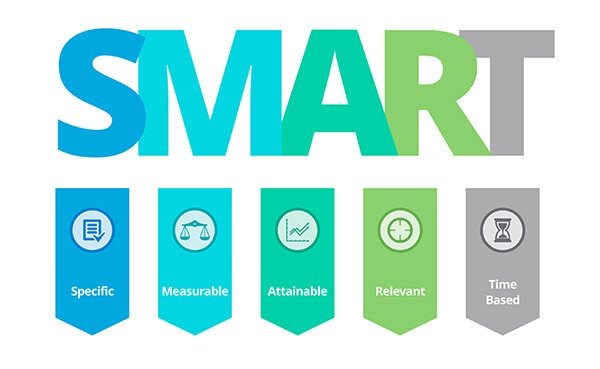Has your IT sector firm enjoyed a burst of growth but progress has recently plateaued? Then it’s time to take a step back and refocus attention on business development.
Setting up a robust business development process will ensure you don’t stagnate and continue to drive revenue.
What is business development? Here’s what it isn’t – it’s not about “hustling”, short term gains or “hit and run” sales. It’s about long-term returns, fostering ongoing client and supplier relationships and sustainably adding value to meet strategic business goals.
A large part of a business development plan includes sales. It also involves:
- marketing
- high-level strategic decision making
- project management
- business planning
- product development and management
- negotiating and networking
- budgeting and initiating cost-saving measures to improve the bottom line
This step-by-step guide will help you create a revenue generation process to scale your IT sector business and take you to the next level in your company’s growth.
Step 1: Establish Goals

Determine your core strategic goals at the outset to have a clear vision of what success looks like. This will also manage expectations, both your own and that of your team, and other important third parties.
In general, business development goals fall into the following categories:
- profitability e.g. increasing revenue, diversifying revenue streams
- customer service e.g. improved retention, satisfaction levels
- efficiency e.g. business operations, increased productivity
- growth e.g. expanding into new geographical territories, increasing market share
Each goal should be realistic with a straightforward system to evaluate it.
Use the SMART concept to help you to formulate workable goals:
- Specific – be clear about what you want to achieve, make it significant yet simple
- Measurable – ensure your goal can be tracked and success can be easily recognised
- Achievable – the goal should be attainable, make sure you have the resources, time or money to meet it
- Relevant – realistic goals that are aligned with your business mission
- Timely – set a reasonable deadline for completing the goal
Aim for between three to five goals to ensure focus.
Measurement
There are numerous ways for you to evaluate the progress you’re making towards your goals and gauge if results have hit or exceeded the target by a specific date. Select the measures that mean the most to you and your team and that use readily accessible and coherent data. Here are some examples to inspire you:
Profitability:
- increase revenue per sale from £X to £Y
- increase total revenue per customer from £X to £Y
- achieve sales growth of X% per year
- increase number of new paying customers by X%
Customer service:
- reduce customer call wait times from X minutes to Y minutes
- increase customer satisfaction scores from X% to Y%
- improve average customer retention from X months to Y months
Efficiency:
- reduce time between a new customer ordering a service or product and set-up date from X days to Y days
- improve quality of a product to reduce returns by X%
Growth:
- enter X number of new geographical locations
- increase the number of prospects in the pipeline from X to Y
- grow market share from X% to Y%
Step 2: Assess Your Current Position
Market research formed part of your IT business strategy before you opened your doors. However, has this changed since you set up?
If you’ve been operating for a while your positioning could have shifted. New players disrupt the industry, established brands evolve with updated products and services and customers’ tastes or needs change.
It’s therefore essential to revisit this research and understand the market as it stands today, and your place within it, before progressing with a new business development plan. You might find that your position has remained solid, or you might be surprised to find it has moved.
This insight will feed into wider goal setting and execution. It will also help you to identify niches or gaps which you can exploit.
Here’s a handy checklist of what to study and analyse.
Market
- investigate wider industry conditions, including trends and forecasts
- narrow down to scrutinise your geographical area
- explore the specific segment you target
- calculate your current market share by finding official reports and statistics that show the most recent total market value
Customer Relations
- conduct a current customer SWOT analysis by surveying your existing clients to understand what you’re doing right and wrong, opportunities and threats
- update/create customer personas
- list the products that customers want which you don’t currently offer
- collate all customer feedback into key areas. Could you ‘fix’ one or two underlying service issues to solve a number of complaints?
Customer Journey
- map the customers’ journey
- single out glitches where customers get confused or lost
- what areas could be streamlined to improve the experience
Competitor Analysis
- use specific variables to compare your business with that of your closest competitors e.g. product price points, brand reputation
- if possible, test out the competition’s products and services
- examine competitors’ recent product launches, marketing campaigns or big sales wins
Positioning
- check the relevance of your brand messaging. Does it appeal to all customer personas? To new customers?
- assess whether your unique selling points are still unique
- does your brand identity (logo, written materials etc) still fit within the market?
Step 3: Get the Team Involved

IT business strategy and development involves high-level decision making, but the initial ideas can come from anyone on your team. Encourage your staff to contribute suggestions for innovations or to help you recognise current operational bottlenecks.
Ideas presented could spark bigger thoughts and with some fine-tuning, these could become the new initiatives that kickstart your business.
Aligning all employees and getting departments to work together on the business development plan from the outset will ensure cohesion, efficiency and success in the long run.
Generating ideas as a company could uncover interesting, previously unknown relationships or untapped skills. It might also flag processes that aren’t running as smoothly as they could be or where one team member or department has a different view of your target customer to another.
Step 4: Decide on the ‘What’
You’ve identified your high-level goals, set data-specific measurables, reviewed your current market position and welcomed ideas from your team. Next, decide on the route you intend to take, or specifically, what strategies you’re going to progress to achieve your goals.
There’s a big difference between “doing business” and “doing the right business”. An effective development plan will not attempt to incorporate everything. Instead, concentrate your efforts on the activity that will add the most long-term value and is of the highest priority.
Some of these objectives might involve potential risks and trade-offs, an allocated budget, time resource or dedicated team member. Ensure you deliberate these implications and are comfortable with requirements and prepared to invest where necessary. This goes back to the ‘achievable’ section of your SMART goals.
By thoroughly evaluating the options that you’ve generated, you can select those that will offer the greatest strategic benefit to the vision you have for your company.
Your priority objectives could include:
- targeting a new customer demographic
- selling in a new geographical area
- establishing your business in a new vertical
- growing brand recognition in your existing market
- driving customer referral volume
- developing a new product
Step 5: Determine the Tactics You’ll Use
Now you’re clear about your priority strategies, define the specific actions you’ll need to pursue for each.
These might be offline or online and include a combination of tactics. Here are some ideas:
- upselling add-ons to existing clients
- repackaging offerings into compelling bundles or promotional deals
- partnering with other companies with products that align with your own and targeting the same customer
- securing new retail channels, referral or affiliate schemes, or third-party intermediaries
- targeting prospects via LinkedIn and securing sales presentation meetings
- networking at conferences, seminars, exhibitions and events
- a series of cold calls to dream clients, retargeting and converting warm leads
- customer journey overhaul to streamline and improve the experience
- office refurbishment, as the bulk of sales meetings happen at your office
- new website or launch of social media channels
- content marketing including blogging and guest posting
- digital advertising lead generation campaign
- brochure or leaflet mail-out to businesses in a key area
The actions required might not be immediately obvious. If that’s the case, engage your team to brainstorm tactics and sense check ideas. Study what your competitors are doing and conduct desktop research.
Alternatively, you can engage a professional firm or freelancer with the appropriate expertise and experience to recommend the most effective and affordable approach.
Step 6: Draw a Roadmap
Next, complete a critical path, or project management plan, that details tasks you’ll do to progress each activity, the order in which they need to be completed and the deadline.
This blueprint will enable you to clearly communicate the business development process to others, as well as provide organisation and structure to your strategy.
Business development can feel like a mammoth undertaking and it’s easy to become overwhelmed. Dividing it into manageable tasks with clear deadlines in one easy-to-follow document will not only help to alleviate stress but will also assist you in getting things done in the right sequence and at the right time.
Step 7: Assign Roles and Responsibilities
Breaking down big ideas into ‘bite-size’ actions as part of the critical path will also assist you in assigning roles and responsibilities to your team.
Delegating clear tasks to departments or individuals within your organisation encourages a sense of ownership and fosters a business-wide desire to succeed.
If you’re solely managing the business development, this is the stage where you honestly appraise the amount of work required, when you’ll be able to do it and how much you can take on, realistically, in addition to your current workload.
Don’t have the in-house resources or the time to manage the activity yourself? Consider outsourcing tasks to reliable and skilled freelancers.
Step 8: Hire Talent
Your business might be at the stage where you can recruit talent to take on the business development, or aspects of it.
Maybe planning has revealed that you require a qualified individual to head up a dedicated sales function, for example if your core strategy is to grow sales in a new region. If your priority objective is a huge push on advertising, public relations and social media, then a marketing focused team member may be necessary.
Or it might be time to hire someone who oversees the entire business development function and can assist you with setting up your business development process and ongoing IT business strategy.
Step 9: Commit to Implementation

A business development plan requires motivation and a sustained effort. Ensure that you reward yourself and your team when progress milestones are met and acknowledge achievements. Plan celebrations when goals are hit.
Build into the critical path regular activity reporting and catch up meetings with team members. This will enable you to reallocate resources to the tactics that are working and improve or abandon the low-performing campaigns.
Step 10: Consider Post-Scale Operations
It’s important to consider operations after your business development activity has taken effect. This will ensure that you can scale quickly without overloading yourself or your team and, crucially, that you maintain the same quality and value for your customers.
Ask yourself these questions: how will you allocate sufficient resources to new customers, is the account management or customer relations team capable? Are you prepared to employ new staff or create new roles or departments?
It’s also important to factor in the management of your personal workload; do you have the capacity for the additional work? If not, what can you reprioritise or delegate to ensure that you’re dedicating optimum attention to driving revenue?
Ready for the Next Chapter?
Developing a robust IT business strategy for growth will reap benefits in the long term.
Doing your due diligence with research and analysis in the first instance, developing a concise and workable plan and setting measurable goals will enable you to focus your attention on the most valuable activities.
In addition to a solid business development process, an open mindset is a must. A willingness to accept and learn from failures and an ability to self-assess honestly and realistically is also crucial. Being adaptable to change, flexible in the face of variable market conditions and agile in terms of refining your offering to meet customer needs will allow you to scale up your business within the IT sector.












